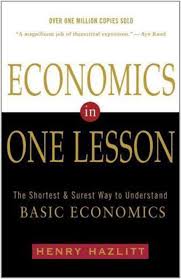Celebrating Reformation Day
I’m thankful for the Reformation. When October 31, 2017 comes around, I will be truly grateful that Martin Luther, Uldrich Zwingli, John Calvin, and many others who are less famous, were willing to risk their very lives to bring the Gospel of Christ back to the center of Christian faith and practice. It’s been 500 years since the Reformation started, but it is an important date in the history of the world that should be celebrated.
Taking potshots at the Reformation is relatively easy. There are aspects of contemporary culture that we don’t like: crony capitalism, hyper-sexualization, post-truth epistemology, environmental degradation, theological chaos. Those who dislike the Reformation tend to lay all of the flaws of contemporary society at the feet of the Reformers because Modernity and the Reformation were roughly synchronous developments. Whether the Enlightenment was progeny, parent, sibling, or classmate of the Reformation is far from a settled debate—that is, unless you want to blame a lot of bad stuff on something that you already don’t like.
It many cases, people within the Reformed tradition have latched on to various aspects of Modernity. Often, they have done so to the detriment of the Christianity they sought to reclaim from the hegemony of the Roman Catholic tradition. The unwitting desupernaturalization of Scripture into often bare, mechanical readings of the text by some within the Fundamentalist tradition is an example of the encroachment of modernity. This has led to sometimes culturally biased readings of Scripture being normalized as eternal truths upon which the reliability of the Bible depends. (Ask yourself why the culture in some churches looks like the 1950’s never ended.)
Within the history of ideas, there is no question that many aspects of Protestantism have been influenced by the surrounding culture—including forces of capitalism, (at times) Marxism, nominalism, empiricism, secularism, etc. Such influences are both obvious and, in some ways, unavoidable. The Gospel never changes, but it will always be expressed in different ways based on the cultural context.
To claim that the Reformed tradition in invalid because it has been influenced by the surrounding culture—as some apologists for Rome sometimes do—is to ignore the fact that earlier Christian tradition was also influenced in its form by the culture around it. The shape of the Roman Catholic hierarchy and magisterium is driven more by the social structures of ancient cultures than by Scripture. This does not necessarily invalidate that ecclesiology, but it may cause contemporary Christians to question whether having one supreme leader of Christianity making authoritative proclamations that may or may not accord with Scripture is more consistent with late Roman polity than with any framework laid down in the Bible.
The defenses to the above comment are obvious and would be worth noting in a different essay. However, they are built on the assumption that what the Roman Catholic Church says is right and the tradition of the Church is on par with the special revelation given in Scripture. Such debates exceed the bounds of this post, though I recommend Matthew Levering’s book on the doctrine of revelation for a meaningful discussion.
The point is that culture pretty obviously has influenced all eras of church practice. But the uniting theme for Christianity is not denim skirts or Latin services, but the Gospel of Jesus Christ. It is precisely this Gospel that was greatly obscured prior to the Reformation and was subsequently returned to the focus of Christianity by the Reformers. They did not divide primarily over polity, veneration of non-divine humans, or liturgy. Rather, Luther and the other early Reformers recognized that salvation by grace alone, through faith alone, and in Christ alone had been sidelined in favor of dependence of heuristic traditions. As a result, they advocated for the ultimate authority of Scripture as the final arbiter of truth, and sought to lead people to live for the glory of God alone. This, and not the petty squabbles between elder-lead and staff-lead Baptist churches, is the root and legacy of the Reformation.
Despite the failures of many Protestant traditions and even more Protestant people, I still affirm and celebrate the Reformation. It represents division—yes. But it represents a division that was necessary for the recovery of the Gospel of Christ which was, and often remains, obscured by the traditions of Rome. No matter how noble a tradition claims to be or how ancient its origin, if it obscures the Gospel, then stepping away from it to affirm the Gospel is warranted and good.
There are a lot of things to critically evaluate about the Reformation, but its heart—the recovery of the Gospel—is worth celebrating, even after 500 years.





















There’s no reason to doubt that Jesus was nailed to the cross. Ultimately, I trust what Scripture says about Jesus’s crucifixion because I also trust what it says about his resurrection. And that’s what we should be celebrating this week.